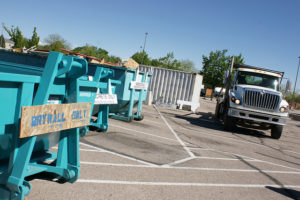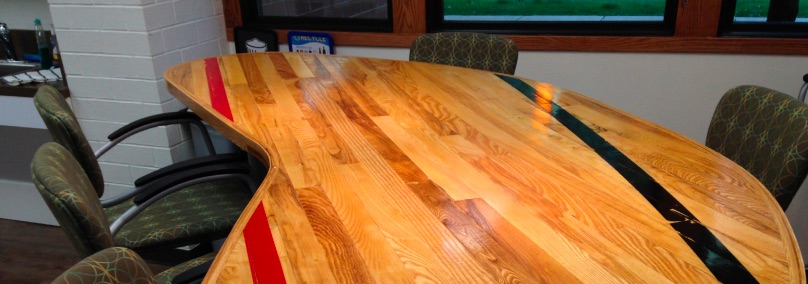CSU’s Institute for the Built Environment has found that the Foothills shopping mall redevelopment in Fort Collins resulted in diverting more than 76,000 tons of waste from the landfill.
The project diverted 100 percent by weight of all concrete, rock, asphalt, dirt, bricks and metal that weren’t considered hazardous materials and 70 percent by weight of all other materials such as wood/lumber or cardboard. The IBE’s full independent report is available here.
 The remaining 29,000 tons that went to the landfill were either contaminated by hazardous materials such as asbestos or could not be reused or recycled.
The remaining 29,000 tons that went to the landfill were either contaminated by hazardous materials such as asbestos or could not be reused or recycled.
The mall’s carbon footprint at full capacity is 5 percent lower than the previous mall under thriving conditions, according to the report and analysis by The Brendle Group. The Institute for the Built Environment reported that construction and demolition activities account for 16 percent of the waste in the Larimer County Landfill.
Smaller carbon footprint
The report also states that the carbon footprint of the mall – including operations – is 36 percent lower as a redevelopment than as a new project on a “greenfield” or vacant site on the edge of the community.
“Redevelopment of an existing property is more sustainable and helps the community reuse and recycle land, which results in the community growing up and not out,” said Josh Birks, director of the City’s Economic Health Office, which oversees the Fort Collins Renewal Authority.
The recycling/reuse effort was a condition of the $53 million in public funding for the $300 million project, including public infrastructure such as sidewalks, the Foothills Activity Center inside the mall and the underpass under College Avenue now under construction.
“This diversion study was a great collaboration with the City, the mall developers and Colorado State,” said Joy Wagner, sustainable building associate at the Institute for the Built Environment. “We assisted by auditing and verifying the diversion efforts to ensure the developer met the City’s reuse and recycling requirements.”
With oversight from the City and the Institute for the Built Environment, the owner/developer — Alberta Development Partners and Walton Street Capital — worked with the contractor, The Beck Group, to manage diversion efforts (deconstruction and salvaging) and track/document recycling and reuse. Materials were deconstructed, sorted and placed in designated collection and storage areas (recycling bins or roll-off dumpsters) labeled for each material (e.g. concrete, metal).

Material reuses
Some creative reuses of materials documented in the report:
Sculpture: The steel purple coneflower sculpture at the Gardens on Spring Creek was crafted from salvaged rebar and galvanized metal wainscoting by Josh Jones, sculptor and welding supervisor at Gallegos Sanitation, Inc. The sculpture is on display at the Gardens on Spring Creek at its Garden of Lights holiday event Dec. 2-Jan. 8.
Rough lumber: More than 50 trees demolished on site were milled by a local furniture maker, Baldwin Hardwoods, into lumber that was sold to local woodworkers or made into countertops.
Reclaimed wood tables: A local furniture maker – Wool Hat Furniture – reclaimed gym flooring from the original Youth Activity Center on Monroe Avenue to make picture frames, tabletops, desks and benches. The original basketball floor also adorns the front desk at the new Foothills Activity Center inside the mall.
The Institute for the Built Environment is in CSU’s College of Health and Human Sciences.